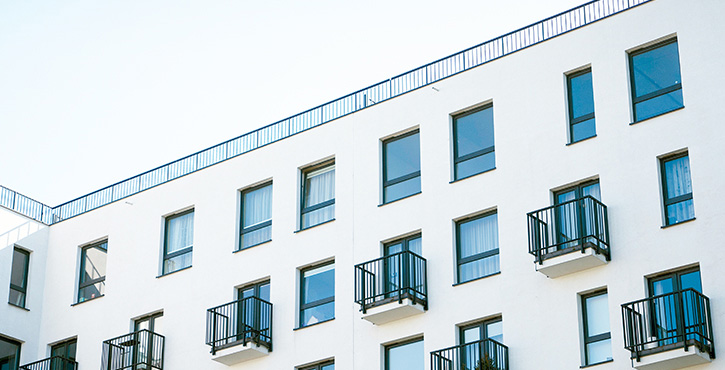Differences between bacteria (prokaryotes) and cells (eukaryotes)
First, it’s important to understand that bacteria are living organisms that can be found in every kind of environment. There are 12 types of bacteria. To learn more about where they come from, let’s start by defining both types of cells.
Cells are divided into two broad categories: prokaryotic and eukaryotic organisms. Let’s begin with the prokaryotes. These have no membrane-bound nucleus or cellular organelles like plastids, mitochondria, the Golgi apparatus, etc. The genetic material commonly referred to as DNA has a circular shape and is often associated with a vacuole of the cytoplasmic membrane.
The other organisms, the eukaryotes, are organisms whose genetic material includes chromosomes found within an organelle called the nucleus, which has the special characteristic of being surrounded by a double membrane. Eukaryotic organisms include all other living beings, single-celled or multi-celled, animals or plants. These are the cells found in the human body.
The bacterium that can be found in a water heater is called Legionella. According to the description above, it’s safe to say that it is a prokaryotic cell. It can multiply rapidly in a favourable climate for growth.
Transmission
In the specific case of water heaters, the growth of Legionella is more likely to happen when the thermostat is not set at the right temperature. As a result, some dangerous consequences may occur, like Legionnaires’ disease.
This disease is a virus that is contracted by inhaling airborne microdroplets of water contaminated with Legionella. The disease is not transmitted from one person to another. However, this bacterium thrives in a temperature that allows it to grow.
Sources of infection
The bacteria multiply at temperatures ranging between 32°C and 45°C. However, in the case of water heaters, the Quebec law on legionellosis prevention requires manufacturers to adjust the thermostat’s temperature to 60°C.
Although Legionella can be found in natural water sources (lakes, rivers and streams) as well as in the ground, the main sources of infection remain artificial water sources, like water-cooling towers, hot tubs and water heaters.
The main sources of infection are:
- Hot water distribution systems, like water heaters and showers
- Water-cooling towers
- Hot tubs
- Decorative fountains and water features
- Certain devices and parts of equipment used in healthcare, like respiratory therapy equipment (including sleep apnea machines, like the CPAP and BiPAP) and devices used in dental care
Description
Legionellosis is a disease caused by a bacterium called Legionella pneumophila. There are two clinical forms of legionellosis. The benign form is called: “Pontiac fever.” It is characterized by flu-like symptoms of fever and cough which generally appear 1 to 2 days following exposure to the bacteria. Recovery usually takes 2 to 5 days, and most cases do not require treatment.
The most serious form of legionellosis, Legionnaires’ disease, is characterized by pneumonia, a lung infection. It generally appears within 2 to 10 days following exposure to the bacteria and can be severe, especially in vulnerable individuals.
Legionellosis can occur at any time of the year but is more common in the summer and fall. Most cases in Quebec are isolated and sporadic. Outbreaks are rare.
Symptoms
Here are a few symptoms of legionellosis:
- Fever
- Headaches
- Fatigue
- Dry cough or difficulty breathing
- Muscle pain
- Loss of appetite
- Diarrhea, nausea and vomiting
- Chest pain
- Spitting up blood
- Changes in mental state (delusion, confusion, disorientation and hallucinations).
Prevention
There is no vaccine or preventive treatment to protect people from legionellosis. However, the risk of contracting the disease can be reduced by dealing with the possible sources of infection.
Here are some recommendations to help prevent legionellosis:
At home:
- Keep the temperature of your water heater at 60°C. At this temperature, the Legionella bacteria cannot multiply. However, it is recommended you install an anti-scald device in the faucet of the shower and bath to lower the water temperature to 49°C. If your water heater has not been operating for several days, let the hot water run for a few minutes.
- Limit the duration of your shower; if the water in your shower becomes lukewarm, close the faucets as quickly as possible so that you do not use up the hot water in your water heater. This could increase the risk of Legionella bacteria contaminating the water.
- Some devices produce airborne droplets, like showerheads, hot tubs and humidifiers. Make sure you clean and maintain these devices properly in accordance with the manufacturer’s instructions. Consult a qualified professional when necessary.
- Do not use tap water in respiratory therapy equipment. Follow the manufacturer’s recommendations for cleaning the device and its tubing.
In buildings:
Use good operating and site maintenance practices. If you own a water-cooling tower, consult the Régie du bâtiment du Québec’s regulations for water-cooling tower maintenance.




